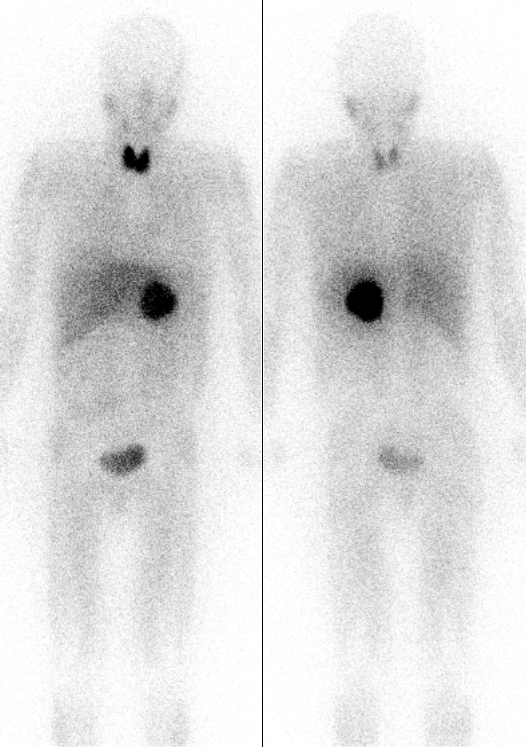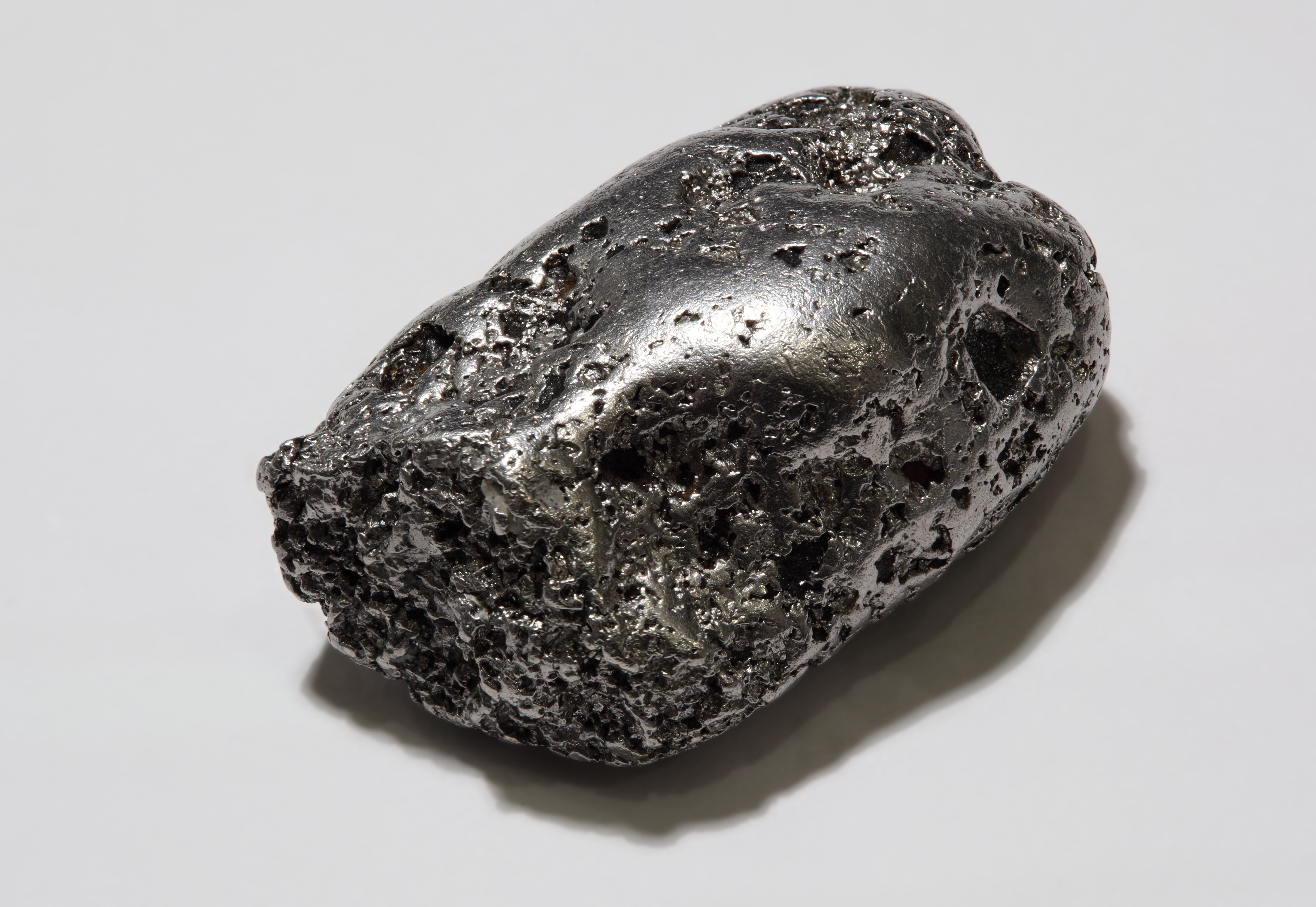|
Potassium Tetraiodoplatinate
Potassium tetraiodoplatinate is the inorganic compound with the formula . It is the potassium salt of tetraiodoplatinate, a square planar complex of platinum(II). The compound crystallizes from water as the dihydrate, whereas the related chloride and bromide and are obtained only as the anhydrous salts. It reacts with amines and with ammonia to give charge-neutral derivatives . The compound is prepared by the salt metathesis reaction of potassium iodide and potassium tetrachloroplatinate: : Potassium tetraiodoplatinate is a precursor to the anticancer drug cisplatin Cisplatin is a chemical compound with chemical formula, formula ''cis''-. It is a coordination complex of platinum that is used as a chemotherapy medication used to treat a number of cancers. These include testicular cancer, ovarian cancer, c .... References {{Reflist Platinum(II) compounds Iodo complexes Potassium compounds ... [...More Info...] [...Related Items...] OR: [Wikipedia] [Google] [Baidu] |
Potassium Tetrachloroplatinate
Potassium tetrachloroplatinate(II) is the chemical compound with the chemical formula, formula K2PtCl4. This reddish orange salt (chemistry), salt is an important reagent for the preparation of other Complex (chemistry), coordination complexes of platinum. It consists of potassium cations and the square planar dianion . Related salts are also known including , which is brown-colored and soluble in alcohols, and Quaternary ammonium cation, quaternary ammonium salts, which are soluble in a broader range of organic solvents. Preparation Potassium tetrachloroplatinate is prepared by reduction of potassium hexachloroplatinate, the corresponding hexachloroplatinate salt with sulfur dioxide. K2PtCl4 is one of the salts that is most easily obtained from platinum ores. The complex is appreciably soluble only in water. Treatment with alcohols, especially in the presence of base, causes reduction to platinum metal. Organic tetrachloroplatinate salts, such as [PPN]2PtCl4 are soluble in ... [...More Info...] [...Related Items...] OR: [Wikipedia] [Google] [Baidu] |
Inorganic Compound
An inorganic compound is typically a chemical compound that lacks carbon–hydrogen bondsthat is, a compound that is not an organic compound. The study of inorganic compounds is a subfield of chemistry known as ''inorganic chemistry''. Inorganic compounds comprise most of the Earth's crust, although the compositions of the deep Mantle (geology), mantle remain active areas of investigation. All allotropes (structurally different pure forms of an element) and some simple carbon compounds are often considered inorganic. Examples include the allotropes of carbon (graphite, diamond, buckminsterfullerene, graphene, etc.), carbon monoxide , carbon dioxide , carbides, and salt (chemistry), salts of inorganic anions such as carbonates, cyanides, cyanates, thiocyanates, isothiocyanates, etc. Many of these are normal parts of mostly organic systems, including organisms; describing a chemical as inorganic does not necessarily mean that it cannot occur within life, living things. History ... [...More Info...] [...Related Items...] OR: [Wikipedia] [Google] [Baidu] |
Square Planar Molecular Geometry
In chemistry, the square planar molecular geometry describes the stereochemistry (spatial arrangement of atoms) that is adopted by certain chemical compounds. As the name suggests, molecules of this geometry have their atoms positioned at the corners. Examples Numerous compounds adopt this geometry, examples being especially numerous for transition metal complexes. The noble gas compound xenon tetrafluoride adopts this structure as predicted by VSEPR theory. The geometry is prevalent for transition metal complexes with d8 configuration, which includes Rh(I), Ir(I), Pd(II), Pt(II), and Au(III). Notable examples include the anticancer drugs cisplatin, tCl2(NH3)2 and carboplatin. Many homogeneous catalysts are square planar in their resting state, such as Wilkinson's catalyst and Crabtree's catalyst. Other examples include Vaska's complex and Zeise's salt. Certain ligands (such as porphyrins) stabilize this geometry. Splitting of d-orbitals A general d-orbital splitti ... [...More Info...] [...Related Items...] OR: [Wikipedia] [Google] [Baidu] |
Ammonia
Ammonia is an inorganic chemical compound of nitrogen and hydrogen with the chemical formula, formula . A Binary compounds of hydrogen, stable binary hydride and the simplest pnictogen hydride, ammonia is a colourless gas with a distinctive pungent smell. It is widely used in fertilizers, refrigerants, explosives, cleaning agents, and is a precursor for numeous chemicals. Biologically, it is a common nitrogenous waste, and it contributes significantly to the nutritional needs of terrestrial organisms by serving as a precursor to fertilisers. Around 70% of ammonia produced industrially is used to make fertilisers in various forms and composition, such as urea and diammonium phosphate. Ammonia in pure form is also applied directly into the soil. Ammonia, either directly or indirectly, is also a building block for the synthesis of many chemicals. In many countries, it is classified as an List of extremely hazardous substances, extremely hazardous substance. Ammonia is toxic, cau ... [...More Info...] [...Related Items...] OR: [Wikipedia] [Google] [Baidu] |
Salt Metathesis Reaction
A salt metathesis reaction (also called a double displacement reaction, double replacement reaction, or double decomposition) is a type of chemical reaction in which two ionic compounds in aqueous solution exchange their component ions to form two new compounds. Often, one of these new compounds is a precipitate, gas, or weak electrolyte, driving the reaction forward. :AB + CD -> AD + CB \mathitA_\mathitD_\mathit + \mathitC_\mathitB_\mathit --> In older literature, the term double decomposition is common. The term double decomposition is more specifically used when at least one of the substances does not dissolve in the solvent, as the ligand or ion exchange takes place in the solid state of the reactant. For example: :AX(aq) + BY(s) → AY(aq) + BX(s). Types of reactions Counterion exchange Salt metathesis is a common technique for exchanging counterions. The choice of reactants is guided by a solubility chart or lattice energy. HSAB theory can also be used to predict ... [...More Info...] [...Related Items...] OR: [Wikipedia] [Google] [Baidu] |
Potassium Iodide
Potassium iodide is a chemical compound, medication, and dietary supplement. It is a medication used for treating hyperthyroidism, in radiation emergencies, and for protecting the thyroid gland when certain types of radiopharmaceuticals are used. It is also used for treating skin sporotrichosis and phycomycosis. It is a supplement used by people with low dietary intake of iodine. It is administered orally. Common side effects include vomiting, diarrhea, abdominal pain, rash, and swelling of the salivary glands. Other side effects include allergic reactions, headache, goitre, and depression. While use during pregnancy may harm the baby, its use is still recommended in radiation emergencies. Potassium iodide has the chemical formula K I. Commercially it is made by mixing potassium hydroxide with iodine. Potassium iodide has been used medically since at least 1820. It is on the World Health Organization's List of Essential Medicines. Potassium iodide is available as a g ... [...More Info...] [...Related Items...] OR: [Wikipedia] [Google] [Baidu] |
Potassium Tetrachloroplatinate
Potassium tetrachloroplatinate(II) is the chemical compound with the chemical formula, formula K2PtCl4. This reddish orange salt (chemistry), salt is an important reagent for the preparation of other Complex (chemistry), coordination complexes of platinum. It consists of potassium cations and the square planar dianion . Related salts are also known including , which is brown-colored and soluble in alcohols, and Quaternary ammonium cation, quaternary ammonium salts, which are soluble in a broader range of organic solvents. Preparation Potassium tetrachloroplatinate is prepared by reduction of potassium hexachloroplatinate, the corresponding hexachloroplatinate salt with sulfur dioxide. K2PtCl4 is one of the salts that is most easily obtained from platinum ores. The complex is appreciably soluble only in water. Treatment with alcohols, especially in the presence of base, causes reduction to platinum metal. Organic tetrachloroplatinate salts, such as [PPN]2PtCl4 are soluble in ... [...More Info...] [...Related Items...] OR: [Wikipedia] [Google] [Baidu] |
Cisplatin
Cisplatin is a chemical compound with chemical formula, formula ''cis''-. It is a coordination complex of platinum that is used as a chemotherapy medication used to treat a number of cancers. These include testicular cancer, ovarian cancer, cervical cancer, bladder cancer, head and neck cancer, esophageal cancer, lung cancer, mesothelioma, brain tumors and neuroblastoma. It is given by intravenous, injection into a vein. Common side effects include bone marrow suppression, hearing problems including severe hearing loss, nephrotoxicity, kidney damage, and vomiting. Other serious side effects include numbness, trouble walking, allergic reactions, electrolyte problems, and heart disease. Use during pregnancy can cause harm to the developing fetus. Cisplatin is in the platinum-based antineoplastic family of medications. It works in part by binding to DNA and inhibiting DNA replication, its replication. Cisplatin was first reported in 1845 and licensed for medical use in 1978 an ... [...More Info...] [...Related Items...] OR: [Wikipedia] [Google] [Baidu] |
Platinum(II) Compounds
Platinum is a chemical element; it has symbol Pt and atomic number 78. It is a dense, malleable, ductile, highly unreactive, precious, silverish-white transition metal. Its name originates from Spanish , a diminutive of "silver". Platinum is a member of the platinum group of elements and group 10 of the periodic table of elements. It has six naturally occurring isotopes. It is one of the rarer elements in Earth's crust, with an average abundance of approximately 5 μg/kg, making platinum about 30 times rarer than gold. It occurs in some nickel and copper ores along with some native deposits, with 90% of current production from deposits across Russia's Ural Mountains, Colombia, the Sudbury basin of Canada, and a large reserve in South Africa. Because of its scarcity in Earth's crust, only a few hundred tonnes are produced annually, and given its important uses, it is highly valuable as well as a major precious metal commodity. Platinum is one of the least reactive ... [...More Info...] [...Related Items...] OR: [Wikipedia] [Google] [Baidu] |
Iodo Complexes
{{disambiguation ...
Iodo may refer to; *Socotra Rock, in the East China Sea * ''Iodo'' (film), 1977 South Korean film directed by Kim Ki-young *Iodine, chemical element, especially as functional group or ligand In coordination chemistry, a ligand is an ion or molecule with a functional group that binds to a central metal atom to form a coordination complex. The bonding with the metal generally involves formal donation of one or more of the ligand's el ... [...More Info...] [...Related Items...] OR: [Wikipedia] [Google] [Baidu] |




